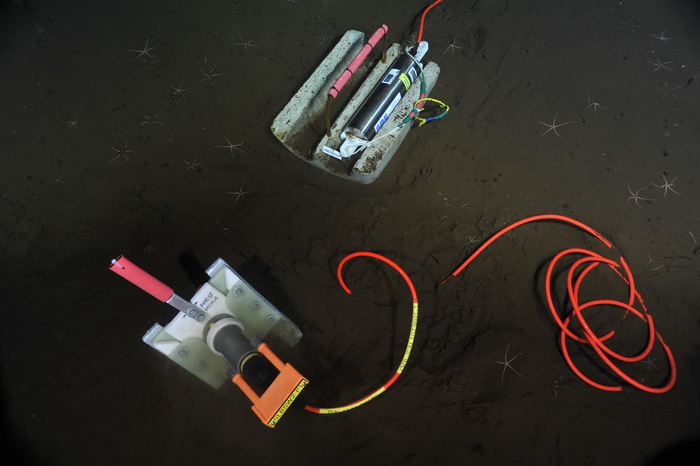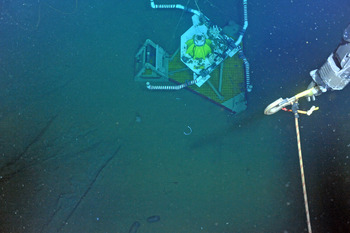Real-time measurements provided by pressure sensors on the seafloor are of great importance because lunar tides, storms, and currents can impact fluid migration into and out of the seafloor crust and sediments. Lunar tides are important in hydrothermal systems where they can casue "pumping" of seawater into the porous chimney walls and within the seafloor where they mix with high temperature hydrothermal fluids, resulting in energy-rich environments for novel microbes. These sensors also measure the passing of tsunamis in real-time.
Seafloor pressure sensors are installed at Axial Base (MJ03A), Slope Base, (MJ01A), and the Southern Hydrate Ridge Summit (LJ01B). Pressure on the Cabled Array is also measured very near the seafloor by the HPIES instruments at Slope and Axial Base, with CTD's on the Benthic Experiment Platforms at the Oregon Shelf and Offshore sites, and on the Bottom Pressure - Tilt instruments at the summit of Axial Caldera.
Pressure sensors are also a component of the CTDs that are near the bottom and on the instrumented Shallow Profiler Moorings and Mclane vehicles on the Deep Profilers where they provide information on where the platforms are in the water column.



